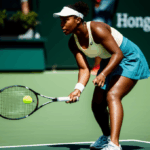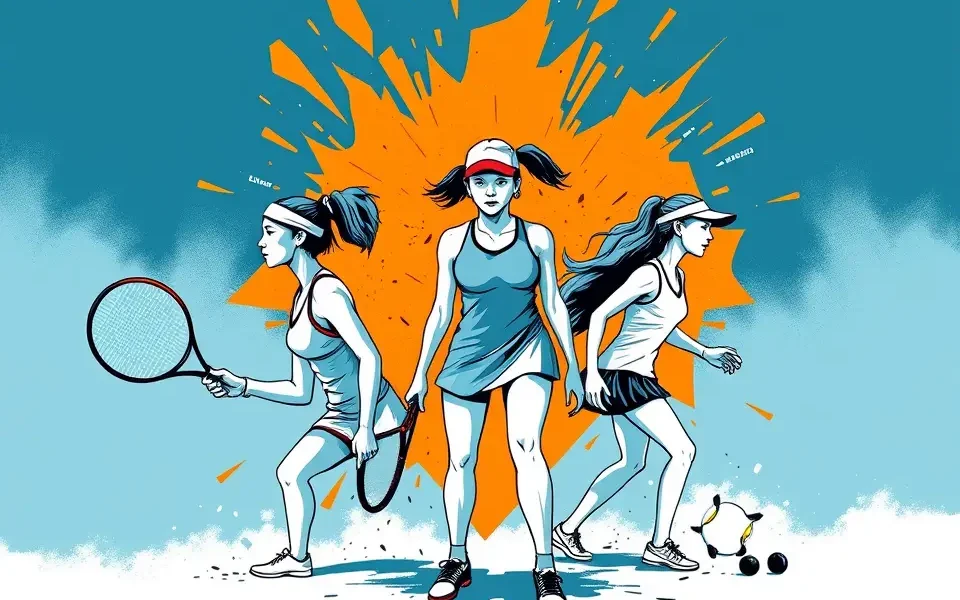The world of women’s tennis is a dynamic arena, constantly evolving with new talents and shifting power dynamics. Recently, comments from prominent figures, including former coaches of Serena Williams, have sparked discussions about the popularity and future leadership of current stars like Iga Swiatek, Aryna Sabalenka, and Coco Gauff. Are these players truly facing a popularity crisis, or are these just observations on the ever-changing landscape of the sport?
Mouratoglou’s Bold Claim: Where Are the “Big Stars?”
Patrick Mouratoglou, Serena Williams’ former coach, ignited controversy with his statement on France Télévisions: “There are no big stars in women’s tennis.” He argued that the current era lacks the monumental popularity of past icons like Sharapova and Serena, whose global recognition transcended the sport itself.
Mouratoglou acknowledged Swiatek’s exceptional talent and achievements, including her four French Open titles. However, he asserted that being a great player doesn’t automatically equate to being a star. This viewpoint raises a critical question: What defines a “star” in modern tennis, and are Swiatek, Sabalenka, and Gauff missing that certain something?
The Star Factor: More Than Just Wins?
Mouratoglou’s comments suggest that “star power” encompasses more than just on-court success. It involves a broader appeal, a captivating personality, and a global recognition that draws in casual fans and media attention. While Swiatek, Sabalenka, and Gauff have all achieved remarkable feats, they might not yet possess the same level of global celebrity as their predecessors.
- Iga Swiatek: Dominant on clay, a multiple Grand Slam champion, and known for her focused, professional demeanor. However, some perceive her as reserved and lacking the flamboyant personality that attracts casual fans.
- Aryna Sabalenka: A powerful player with a fierce on-court presence, Sabalenka has won multiple Grand Slam titles and reached the World No. 1 ranking. While popular, her appeal might be limited by her relatively lower profile compared to other stars.
- Coco Gauff: The youngest of the trio, Gauff has captured the hearts of many with her inspiring story, her activism, and her engaging personality. Her US Open victory solidified her status as a top player and a rising star with significant mainstream appeal.
Macci’s Prediction: Gauff to Take the WTA Lead
Adding another layer to the discussion, Rick Macci, Serena Williams’ childhood coach, has predicted that Coco Gauff will replace Iga Swiatek as the “WTA clubhouse leader” in 2025. While Macci acknowledged Swiatek’s mental strength, he believes that Gauff and others have improved mentally and will achieve even more.
Sabalenka’s Dominance: An Overlooked Factor?
Macci’s statement is particularly interesting considering that Aryna Sabalenka finished the previous year as the World No. 1 and was voted as the Player of the Year. Sabalenka’s impressive season included winning the Australian Open and the US Open, solidifying her position as a top contender.
Some analysts suggest that Macci’s prediction might be more about Gauff’s potential and marketability rather than a direct comparison of current achievements. Gauff’s age, combined with her impressive performances and engaging personality, makes her a highly attractive figure for sponsors and fans alike.
The Pressure on Gauff: Can She Live Up to the Hype?
Coco Gauff’s rise has been meteoric, and the expectations surrounding her are immense. At just 20 years old, she’s already a Grand Slam champion and a role model for many young players. However, can she handle the pressure of being touted as the next leader of women’s tennis?
Gauff’s Strengths: Mental Fortitude and Adaptability
Gauff has demonstrated remarkable mental fortitude and adaptability throughout her career. She has overcome challenges and setbacks with grace and determination, showcasing a maturity beyond her years. Her ability to learn from her losses and make adjustments to her game has been crucial to her success.
The Evolving Landscape of Women’s Tennis
The comments from Mouratoglou and Macci highlight the evolving landscape of women’s tennis. While Swiatek, Sabalenka, and Gauff are undoubtedly among the top players in the world, the sport is constantly changing, with new talents emerging and established stars facing new challenges.
- The Rise of New Contenders: Players like Elena Rybakina, Jessica Pegula, and Qinwen Zheng are also making their mark on the WTA Tour, adding depth and excitement to the competition.
- The Importance of Adaptability: The ability to adapt to different playing surfaces, opponents, and conditions is crucial for sustained success in modern tennis.
- The Role of Mental Strength: Mental toughness, resilience, and the ability to perform under pressure are essential qualities for any player aspiring to reach the top.
Beyond the Headlines: Analyzing the Players
To gain a deeper understanding of the situation, let’s analyze each player’s strengths, weaknesses, and potential for growth:
Iga Swiatek: The Reigning Clay Queen
Iga Swiatek has established herself as a dominant force on clay, winning multiple French Open titles and showcasing her exceptional court coverage, tactical acumen, and mental strength. However, she has faced challenges on other surfaces, and some critics argue that she needs to diversify her game to achieve sustained success across the board.
- Strengths: Clay-court prowess, tactical intelligence, mental fortitude, court coverage.
- Weaknesses: Relative vulnerability on faster surfaces, perceived lack of charisma.
- Potential for Growth: Developing a more aggressive game style, enhancing her serve, and cultivating a more engaging public persona.
Aryna Sabalenka: The Powerhouse with a Point to Prove
Aryna Sabalenka has emerged as a formidable competitor, known for her aggressive baseline game, powerful serve, and fierce determination. After winning two Grand Slam titles, Sabalenka has silenced doubts about her ability to perform on the biggest stages.
- Strengths: Powerful serve, aggressive baseline game, mental toughness, improved consistency.
- Weaknesses: Occasional lapses in concentration, tendency to overhit.
- Potential for Growth: Further refining her shot selection, improving her net game, and maintaining her composure under pressure.
Coco Gauff: The American Hope
Coco Gauff has captured the attention of the tennis world with her inspiring story, her impressive athleticism, and her engaging personality. Her US Open victory marked a significant milestone in her career, solidifying her status as a top player and a role model for young athletes.
- Strengths: Athleticism, all-court game, mental toughness, engaging personality, growing serve and forehand.
- Weaknesses: Forehand consistency, occasional struggles with focus, net play
- Potential for Growth: Improving her forehand consistency, refining her shot selection, and continuing to develop her overall game.
Conclusion: A New Era of Women’s Tennis?
The comments from Serena Williams’ former coaches have sparked a debate about the popularity and future leadership of women’s tennis. While Swiatek, Sabalenka, and Gauff are undoubtedly among the top players in the world, the sport is constantly evolving, with new talents emerging and established stars facing new challenges.
Whether or not these players achieve the same level of global celebrity as their predecessors remains to be seen. However, their talent, hard work, and determination will undoubtedly shape the future of women’s tennis for years to come. The 2025 season promises to be an exciting one, with Swiatek, Sabalenka, Gauff, and other top players battling for supremacy on the court. Only time will tell who will emerge as the true stars of this new era.








No Comment! Be the first one.